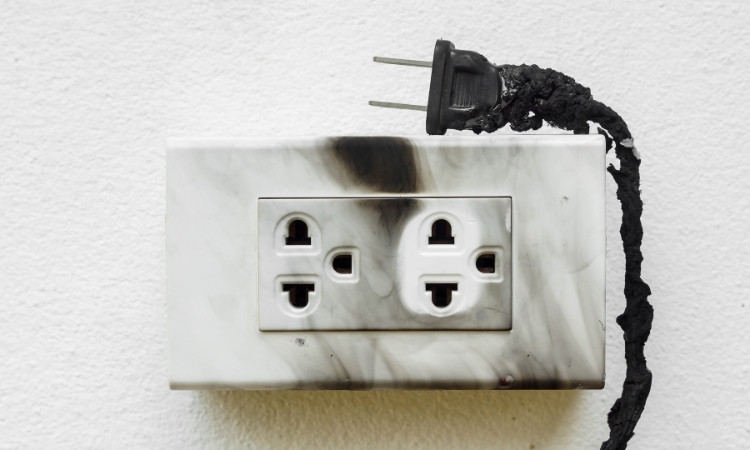Prevent short circuits before they catch you off guard. Living in a highly urbanized and humid environment like Singapore, we’re surrounded by modern appliances, air conditioning units, and power-hungry devices, all of which depend on a stable electrical system. In a compact HDB flat under Singapore’s steamy humidity, a sudden blackout or, worse, an electrical fire can turn your day upside down.
As someone who has worked closely with homeowners and electricians alike, I know how minor electrical problems can transform into life-threatening situations rapidly. Whether you are living in a modern condominium or a decades-old HDB flat, learning how to prevent short circuits at home is more than just a safety tip.
It is a smart and essential step toward protecting your family, your appliances, and your peace of mind. LS Electrician Services Singapore explains how to prevent short circuits at home in Singapore. It is important to note that their professional distribution box installation, light bulb replacement, and switch installation services need no introduction in Singapore.
What is a Short Circuit and Why Is It Dangerous?
A short circuit occurs when electricity flows along an unintended path with little to no resistance, often due to faulty wiring, exposed wires, or water intrusion. In Singapore’s humid climate, this risk is heightened, especially in older homes or places with frequent condensation, like bathrooms and kitchens.
In Singapore, where many homes experience high humidity and frequent electrical use due to air-conditioning, the risk of short circuits increases if regular maintenance is ignored. Older HDB flats, in particular, may have aging wiring that no longer meets modern standards.

How to Prevent Short Circuits at Home in Singapore
Below are specific, effective steps you can take to prevent short circuits and protect your home from electrical disasters:
1. Inspect Electrical Wiring Regularly
Whether you’re in a resale flat or a newly renovated unit, make it a habit to inspect visible wires for damage. In my own home, I found a frayed extension cord that had gone unnoticed behind a sofa — an easy fix, but a potential hazard.
Hire a licensed EMA-certified electrician in Singapore every few years to inspect the concealed wiring inside walls. This is especially crucial if your home is more than 10 years old.
2. Avoid Overloading Power Points
It’s common to plug multiple appliances into a single wall socket using extension cords. But that’s risky. Appliances like kettles, microwaves, and washing machines draw high current. Overloading can lead to overheating, sparking, and a short circuit.
Use power strips with circuit breakers and limit the number of devices you plug in. And always unplug unused devices; they not only waste energy but also increase the chance of electrical failure.
3. Keep Electrical Outlets Dry
Singapore’s tropical climate brings frequent rainfall and high humidity. Moisture is a silent enemy when it comes to electrical safety. Make sure all outdoor sockets are weatherproof, especially those on balconies or patios.
In bathrooms and kitchens, where water exposure is high, always use Ground Fault Circuit Interrupter (GFCI) outlets. They are designed to shut off electricity quickly if a fault is detected.
4. Invest in Quality Electrical Fixtures
This is one area where you shouldn’t cut corners. Select electrical switches, sockets, and fittings made by reputable brands that also meet Singapore’s Safety Mark requirements. All electrical products should conform to standards defined by the Consumer Product Safety Office (CPSO) for the local market.
Avoid cheap, unbranded components. They may be tempting, but their internal wiring is often subpar. I once replaced a flickering socket in my office, only to discover the internal parts were barely held together with glue.

5. Get Professional Help for Electrical Work
DIY repairs can be tempting, especially when you think it’s just a “small fix.” However, in Singapore, only licensed electricians registered with the Energy Market Authority (EMA) are allowed to carry out electrical work.
Trying to save a few dollars by doing it yourself might end up costing you your home or safety. Whether it’s installing a new ceiling fan, rewiring your lights, or upgrading your circuit breakers, always engage a professional.
Prevention of Short Circuits: More Than Just Wires
The prevention of short circuits is a mindset, one that combines regular checks, using certified products, and understanding the risks of electrical neglect. It’s about creating a culture of electrical awareness in your household.
Teach your children never to play with sockets or yank cords. Educate your domestic helper on proper appliance use. Keep your hands dry when switching on the kettle. These small habits go a long way in preventing short circuits.
Common Signs of Potential Short Circuits
Watch out for these red flags:
- Flickering or dimming lights
- A burning smell near switches or outlets
- Frequent tripping of your circuit breaker
- Discolored or warm electrical outlets
- If you notice any of these, shut off the power immediately and call an electrician.
Conclusion
The key to protecting your home is knowing how to prevent short circuits and taking action before trouble starts. The use of certified appliances by Singaporean residents requires individuals to demonstrate environmental awareness while conducting regular manufacturer inspections to resolve safety concerns quickly.
The implementation of daily moisture control measures supervised by professionals leads to substantial improvements in home safety. Safety awareness combined with your attention serves to prevent short circuits in Singapore while protecting your loved ones in Singapore. Prevention is not just about avoiding problems; it is about building long-term peace of mind.
